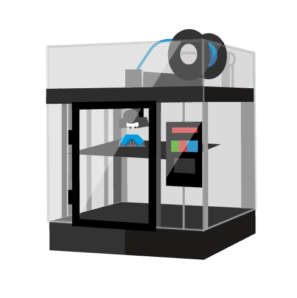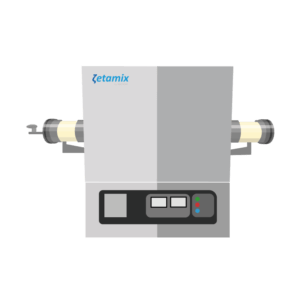As in all ceramic processes, the manufacturing of Zetamix parts is done in 3 steps: the shaping (here the printing), the debinding and the sintering. Once these 3 steps are completed, the printed parts benefit from a density of up to 99% for ceramics and between 90 and 95% for metal.

Our filaments are compatible with most FDM machines. For a better result, machines equipped with a “direct drive” system should be favoured.
So that the ceramic powder can be easily shaped, it is mixed with a binder. Once printed, the part is not finished yet; it’s “green”. In order for it to have the same properties as the part made industrially, it must be debinded and sintered.
For zetamakers who don’t yet possess a printer, we provide a printer (Raise 3D Pro2) fully compatible with our filaments.

Debinding is the process of removing the binder. Zetamix parts are debinded in an acetone bath. At the end of this step, the part’s mass will have decreased.
Nanoe will provide you with a debinding station if you do not already have one.

Sintering is the step of “cooking” a part at a very high temperature. By sintering the part, it densifies itself and acquires its final mechanical properties. After this step, the parts have a density of up to 99% for ceramics and 95% for metal. In addition, the object undergoes a 15 to 20% withdrawal.
Nanoe provides a tubular furnace to sinter ceramic parts as well as metal parts that need to be sintered under neutral gas.

Once the part is out of the oven, it can be polished by hand or by the tumbling process for a brighter look. For metal parts, sandblasting can also be used, which gives very good results.